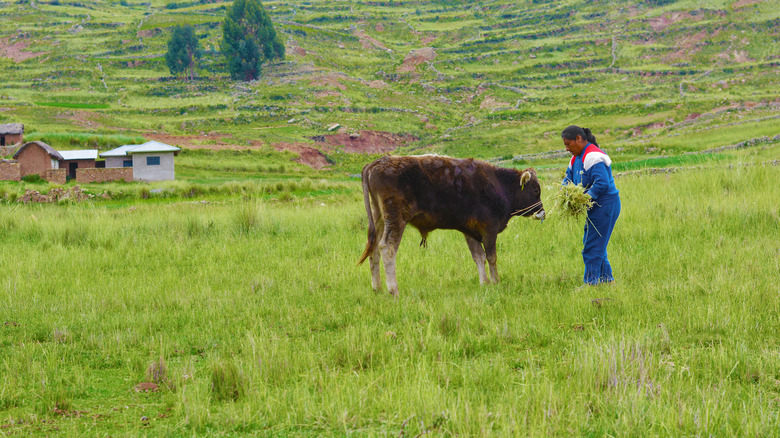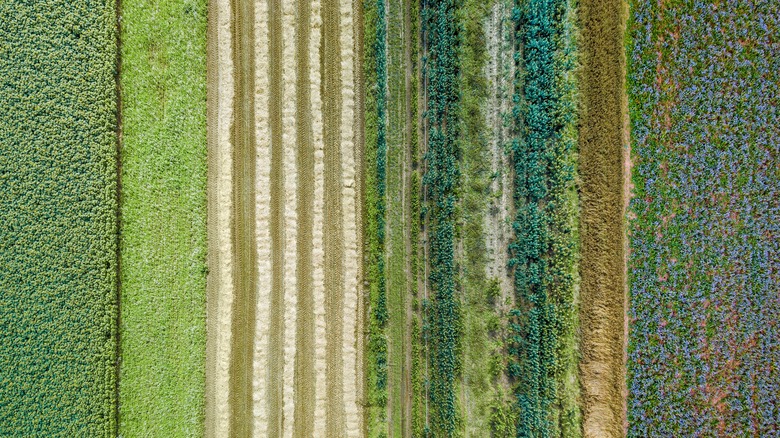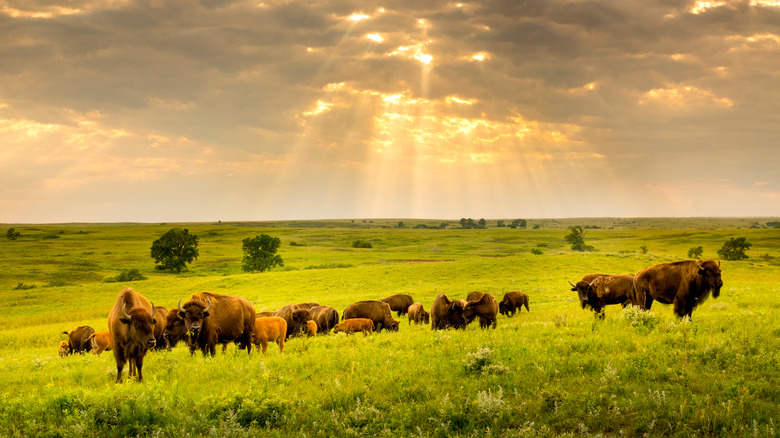Indigenous Agricultural Practices May Be The Alternative To Plant-Based Protein
The journey of plant-based protein from niche science to mainstream dining has been nothing short of extraordinary. The International Food Information Council found that 65% of Americans reported sampling plant-based protein in 2021, a statistic once unthinkable in the nation that brought you "Beef. It's what's for dinner." The arrival of these meat alternatives is timely amidst our severe climate crisis. Livestock generates close to 15% of global greenhouse gas emissions, according to the University of Colorado. That's more than all transportation emissions combined.
Pat Brown believes he has the solution. The CEO of Impossible Foods, one of the largest plant-based meat brands, has boldly predicted that alternative proteins will completely replace all forms of animal agriculture by 2035 (via Bon Appétit). Credit Brown for ambition, but entirely erasing the global meat industry within 15 years is hardly realistic. Although more people are trying plant-based protein, Statista reveals only 5% of Americans are fully vegetarian, even though the U.S. is the leading consumer of meat substitutes.
Though its fanbase is growing, many consumers are still unsatisfied with the mouthfeel of alternative proteins, which are still largely limited to imitations of ground beef. Healthline praises Impossible meat's protein and vitamin content but raises concerns about its high sodium content and genetically modified (GMO) ingredients. Factor in the significant role that meat plays in many cultural traditions, and it becomes clear that erasing animals from our diet isn't realistic. But what if we could create sustainable agriculture without sacrificing meat?
Regenerative agriculture
As it turns out, a path toward sustainable omnivorism was laid out millennia ago by Indigenous farmers who practiced regenerative agriculture. As the Natural Resources Defense Council points out, regenerative agriculture is less a strict set of practices than a philosophy, farming in harmony with nature rather than in opposition to it. To understand its value, we must compare it to the inefficiencies of modern agriculture, beginning with the practice of polycultures. As the National Farmers Union (NFU) explains, polycultures entail planting multiple crop species in the same field to take advantage of their natural symbiotic relationships. A perfect example is the "three sisters" cultivated by the Northeastern Iroquois: corn, beans, and squash. Planted together, the corn stalks support the bean vines, the beans add vital nitrogen to the soil, and the squash vines maintain soil moisture while protecting against weeds.
Compare this to monoculture farming, growing only one kind of crop in any given field. The European Commission notes that monocultures came to the forefront of global agriculture after WWII because they allowed bulk planting and harvesting. However, the lack of biodiversity degrades the soil, and Bon Appétit points out that healthy soil is an essential "sponge" for absorbing carbon emissions. According to the Guardian, most of the world's cropland, dominated by inefficient farming methods, is used exclusively to grow animal feed, an invisible cost of the meat industry. Converting this cropland to polycultures would be a significant step towards making meat more sustainable.
Farming in harmony with nature
Many Indigenous farming practices seek to emulate the natural environment. Agroforestry is the practice of cultivating trees, food crops, and livestock on the same land (via NFU). Chris Newman, a member of the Choptico Band of the Piscataway people, employs this system on his farm in Virginia (via Bon Appétit). He raises cows, pigs, chickens, and ducks alongside a wide swath of vegetables and fruit trees. Raising multiple species on the same land is one of the simplest ways to make the meat industry more sustainable. The Cornell Small Farms Program encourages farmers to raise species with varying diets so they can feed on polycultures, citing studies that say raising cows and sheep together allows farmers to support more total animals than raising either species on its own.
Single-species farms can also be made more sustainable if they take a pointer from Indigenous agriculture. Stanford University profiled Latrice Tatsey, a member of the Blackfeet people who began teaching cattle ranchers the traditional method of regenerative grazing while she was still a graduate student at Montana State University. The Blackfeet would rotate herds of bison through a sequence of different pastures, never letting them graze in one place for too long. Each time the herd moved to a new field, it gave the soil and vegetation they left behind time to regenerate. These principles are certainly simpler than genetically engineering meat substitutes, but they could work if they got the chance again.


